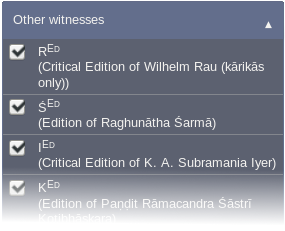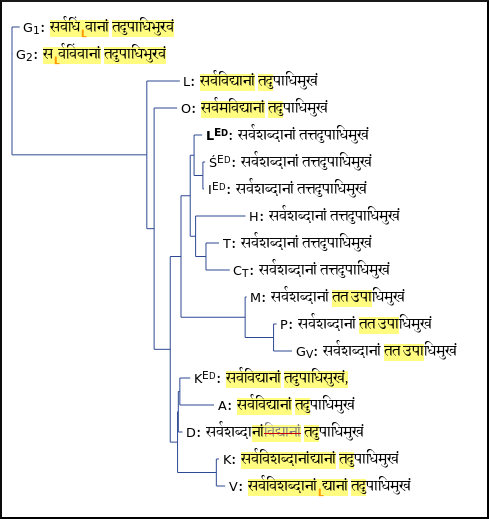Table of Contents
Instructions for readers
Each text consists of a number of files, each of which is one version of the text. They might be transcriptions of manuscripts, of printed sources, or born-digital texts. They are encoded in TEI XML format, and the XML source can be viewed, by clicking the  button, or downloaded, by clicking the
button, or downloaded, by clicking the  button and selecting “TEI XML”.
button and selecting “TEI XML”.
Generating an apparatus of variants
In order to compare different versions of a text, you can generate an apparatus of variants:
- First, pick one version of the text to be the base text.
- Select one or more other witnesses that you want to compare to the base text.
Apparatus options
There are a number of additional options for how to deal with TEI tags, punctuation, and orthography. TEI tags can be set to to either:
- Hide: removes the tag and its contents completely
- Ignore all: ignores the tag and its contents in the comparison
- Ignore tag only: ignores the tag but keeps the text inside the tag for comparison
- Include: considers the tag to be significant in the comparison
See Punctuation and Orthography for information on the options and algorithms used to filter out insignificant variation.
Using the apparatus
- The variant readings will appear in the right margin. Move the cursor over a variant reading in order to see the lemma highlighted in the base text.
- Click on a siglum to go to the transcription of that witness.
- A siglum with a dotted underline indicates the presence of a minor orthographic variation. Move the cursor of the underlined siglum to display it.
- In the text, click and drag to highlight a passage to show a positive apparatus.
Other tools
Export options
Any text, with or without an apparatus, can be exported as TEI XML, LaTeX, or FASTA.
- In order to compile the exported LaTeX file, you will need the reledmac package. By default, the file uses the Brill typeface as well as a few characters from Pedantic Devanagari. These can be swapped out for different fonts by changing the corresponding lines in the LaTeX file.
- FASTA is a format used in bioinformatics. The exported FASTA file treats each text as a sequence of letters, with no spaces. They can be aligned using the MAFFT sequence alignment program in text mode. The resulting alignment can be used to produce phylogenetic trees and networks, using software such as Mesquite or SplitsTree.








